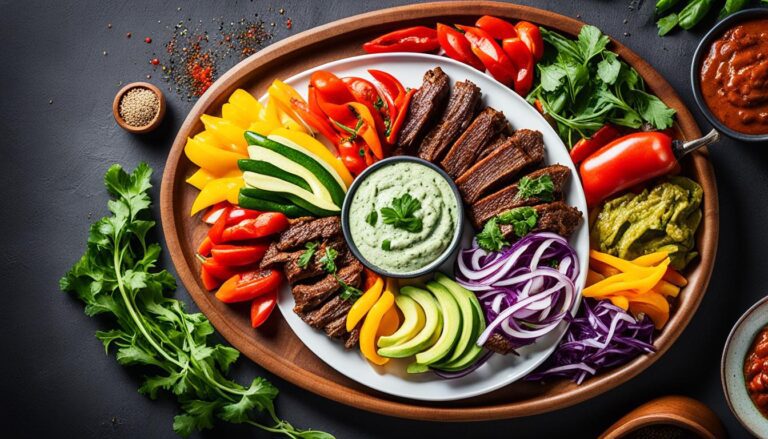Why Does Ethiopian Food Hurt My Stomach?
Have you ever wondered why you experience stomach discomfort after indulging in a delicious Ethiopian meal? It’s a common occurrence for many of us, and the exact cause may not always be clear. In this article, we will explore the possible reasons behind this phenomenon and provide some insights on how to minimize the discomfort while still savoring the flavors of Ethiopian cuisine.
Key Takeaways:
- Teff allergy or intolerance may be one possible culprit for stomach discomfort after consuming Ethiopian food.
- Other ingredients and spices used in Ethiopian cuisine, such as berbere spice and lentils, can also contribute to gastrointestinal distress.
- The high fiber content and generous portion sizes of Ethiopian dishes can lead to stomachaches and frequent bowel movements.
- The fermentation process involved in making injera, the staple bread of Ethiopian cuisine, may cause sensitivities in some individuals.
- Personal sensitivities and individual reactions to specific foods can vary, so it’s important to consider individual factors when experiencing stomach discomfort.
Possible Culprit: Teff Allergy or Intolerance
Teff, a nutritious grain, is a key ingredient in injera, the traditional Ethiopian bread. However, some individuals may experience gastrointestinal distress after consuming teff-based dishes. This could be due to a teff allergy or intolerance.
Injera is the centerpiece of Ethiopian cuisine, with its spongy texture and unique flavor. However, if you suspect teff as the cause of your discomfort, it may be worth eliminating injera from your meals to observe if the symptoms improve.
By removing injera from your diet temporarily, you can determine whether teff is the culprit behind your food intolerance. Pay close attention to any changes in your symptoms and consult with a healthcare professional if needed.
In addition to teff, there may be other factors contributing to your stomach distress when consuming Ethiopian food. We will explore other potential triggers in the following sections, offering insights into ingredients, spices, fiber content, and personal sensitivities.
Considering Other Ingredients and Spices
When it comes to understanding why Ethiopian food may cause stomach discomfort, it’s essential to consider not only teff but also the other ingredients and spices commonly used in Ethiopian cuisine. One such ingredient is berbere spice. This aromatic blend of spices, including chili peppers, garlic, ginger, and various herbs, adds a distinct flavor to Ethiopian dishes. However, some individuals may not be accustomed to the specific combination of ingredients in berbere spice, which can contribute to gastrointestinal distress.
In addition to berbere spice, certain ingredients like lentils can also play a role in stomach discomfort. Lentils are widely used in Ethiopian cuisine, particularly in hearty stews and lentil-based dishes. While lentils are a fantastic source of protein and fiber, they can also be challenging to digest for some individuals, leading to bloating or gas.
Another ingredient to consider is kitfo, a traditional Ethiopian dish made with minced raw meat. While it is a popular delicacy, kitfo can be a source of stomach discomfort for those who are not accustomed to consuming raw meat.
If you’re opting for vegetarian options, it’s important to note that even these dishes can cause gastrointestinal distress in some individuals. It’s possible that certain combinations of ingredients or cooking methods used in vegetarian Ethiopian dishes may not agree with everyone’s digestive systems. Being mindful of the ingredients used and observing your body’s reactions can help you identify potential triggers.
Knowing Your Body
Ultimately, everyone’s body reacts differently to different foods. While some individuals may have no issues with berbere spice, lentils, kitfo, or vegetarian options, others may experience discomfort. It’s essential to pay attention to your body’s signals: if you notice recurring stomach troubles after consuming Ethiopian food, consider keeping a food diary to identify potential triggers and patterns.
Fiber Content and Portion Sizes

Ethiopian cuisine is known for its flavorful dishes that incorporate a variety of ingredients, including lentils, vegetables, and a traditional bread called injera. These components contribute to the high fiber content typically found in Ethiopian food. While fiber is an essential nutrient for a healthy digestive system, consuming large amounts of fiber, especially if you’re not used to it, can lead to increased bowel movements and discomfort.
In addition to the fiber content, the generous portion sizes served in Ethiopian restaurants can also contribute to digestive issues. It’s easy to unintentionally overeat when faced with a plate full of delicious food. This can further exacerbate symptoms of stomach discomfort, leaving you feeling bloated and uneasy.
When enjoying Ethiopian cuisine, it’s important to be mindful of the high fiber content and portion sizes. Consider starting with smaller portions and gradually increase as your body adjusts to the fiber-rich diet. Listening to your body’s cues and eating until you feel satisfied, rather than overly full, can help prevent digestive discomfort.
Fermentation Process and Sensitivity

When it comes to Ethiopian cuisine, one cannot overlook the significance of injera, the traditional bread that accompanies many dishes. What sets injera apart is the unique fermentation process it undergoes, giving it a distinct flavor and texture. However, for some individuals, the consumption of fermented foods can lead to gastrointestinal distress.
Sensitivities to fermented foods, such as injera, may manifest as symptoms like bloating, gas, or abdominal discomfort. These reactions could be attributed to the byproducts of the fermentation process, which may not agree with everyone’s digestive system.
While injera is a prime example of a fermented food in Ethiopian cuisine, it’s important to consider if other fermented foods, like kimchi or sauerkraut, also trigger similar symptoms in sensitive individuals.
To further explore the impact of fermentation on sensitivities, let’s take a moment to examine how it contributes to the distinct qualities of injera.
Personal Sensitivities and Individual Reactions
When it comes to food and our bodies, we are all unique. What may cause discomfort in one person’s digestive system might not have the same effect on someone else. That’s why it’s important to consider our personal sensitivities and individual reactions when it comes to the foods we consume.
Understanding our own bodies and how they react to different foods can be a valuable tool in managing digestive issues. One way to do this is by keeping a food journal, where we can track what we eat and any symptoms that arise. By carefully noting patterns and potential triggers, we can start to identify specific sensitivities that may be causing discomfort.
For example, some individuals may find that certain ingredients or spices common in Ethiopian cuisine, such as berbere spice or lentils, have a negative impact on their digestion. Others may have personal sensitivities to fermented foods, like injera. By recognizing these individual reactions, we can make informed choices about the foods we consume.
Tracking Symptoms and Identifying Triggers
In order to effectively identify triggers and manage personal sensitivities, it’s essential to track symptoms consistently. When a discomfort or reaction occurs, take note of the specific food or ingredient that was consumed. Over time, patterns may emerge that help pinpoint the cause of the discomfort.
By recognizing personal sensitivities and individual reactions, we can make informed decisions about our diets and choose alternative options when necessary. For instance, if someone has a sensitivity to teff, the grain used in traditional Ethiopian injera, they could explore other grain substitutes or bread options.
Considering our personal sensitivities and individual reactions is key to finding dietary choices that work best for us. Each person’s digestive system is unique, and it’s important to listen to what our bodies are telling us. By understanding and respecting our own individual needs, we can make informed decisions about the foods we consume and live a more comfortable, balanced life.
Exploring Alternatives and Modifications
If teff or other ingredients are identified as triggers for stomach discomfort, there are alternatives available. Ethiopian dishes can be enjoyed without injera by opting for other bread or grain substitutes. By making simple modifications to Ethiopian food, we can still savor the rich flavors while accommodating our dietary needs and preferences.
For those seeking alternatives to injera, there are various options to consider. One option is to replace injera with flatbreads such as lavash or pita bread. These breads provide a similar texture and can be used to scoop up the delicious Ethiopian stews and dishes. Another alternative is to explore different grains like quinoa or rice as a base for your meals. These grains can still complement the robust Ethiopian flavors while offering a milder and lighter option compared to injera.
When dining at Ethiopian restaurants, it’s essential to communicate any dietary restrictions or sensitivities to the staff. By doing so, they can make necessary modifications in the preparation of the food to accommodate your needs. Whether it’s omitting certain ingredients, adjusting spice levels, or preparing customized dishes, many restaurants are willing to accommodate their patrons’ requests to ensure an enjoyable dining experience for everyone.
By exploring alternatives and modifications in Ethiopian cuisine, we can continue to indulge in the vibrant flavors and unique culinary traditions while taking care of our stomachs. Remember, it’s essential to listen to our bodies and make choices that nourish and support our overall well-being.
Conclusion
After examining the potential causes of stomach discomfort when consuming Ethiopian cuisine, we can conclude that various factors may contribute to this issue. It could be related to specific ingredients like teff, spices such as berbere, the high fiber content, or even personal sensitivities to fermented foods. However, it’s important to note that everyone’s digestive system is unique, and individual reactions may vary.
To address stomach discomfort when enjoying Ethiopian dishes, it is recommended to identify the specific triggers by keeping a food journal and tracking symptoms. Once identified, making necessary modifications or exploring alternatives can help alleviate the discomfort while still savoring the rich flavors of Ethiopian cuisine. For instance, opting for substitutes to injera or communicating dietary restrictions to restaurant staff for customized preparations can make a difference.
If stomach discomfort persists or the symptoms are severe, it is advisable to consult with a healthcare professional for personalized advice and guidance. They can provide further insights, address concerns, and recommend suitable solutions for your specific situation. Remember, enjoying Ethiopian food should be a delightful experience, and by understanding the potential triggers and taking appropriate steps, you can continue to savor the unique and flavorful world of Ethiopian cuisine.







